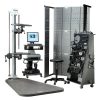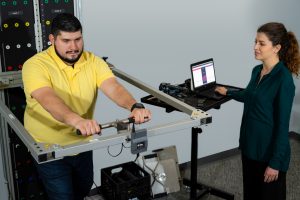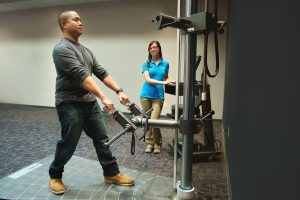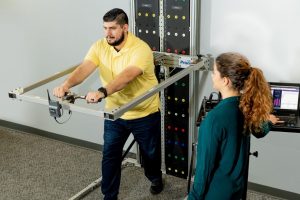
Functional Assessment Screening Tools for Physical Therapy: Implementation and Best Practices
Treatment GuidelinesDiscover functional assessment screening tools for physical therapy. Get implementation strategies and best practices to improve patient outcomes effectively.
The Critical Role of Functional Assessment in PT Practice
Physical therapy treatment should be guided by the findings gleaned in the examination and evaluation. For this reason, it is important that you use accurate assessment and screening techniques.
Under the broad umbrella of assessment tools, we find a subcategory known as functional assessments. These tests are designed to replicate real world situations as much as possible in order to best identify deficits patients may face with a given task in work and daily life.
With the increasing need for evidence-based physical therapy, it’s important for physical therapists to know how to implement and interpret reliable functional assessments. In this article, we will review functional screening tools in physical therapy and how they can be used most effectively in your clinical practice. Let’s dive in!
Understanding Functional Assessment Screening Tools: Foundation and Purpose
Functional fitness, at its core, has always been focused on the best way to move. This is the foundation of functional assessments: how well a person can progress through motions that commonly occur in their day. For instance, if a person has trouble getting up from a chair, a functional assessment would involve some sort of squatting or sitting-to-standing.
What Makes an Assessment Tool “Functional”
There are a few key factors which make an assessment tool functional.
One consideration is whether the testing examines real-world activities or whether it is an isolated movement. For example, a squat is a very relevant functional exercise when addressing a patient’s trouble with sitting down and standing up. However, testing knee flexion strength as an isolated movement would not be as insightful.
Another element of a functional assessment is the predictive value for work or daily tasks. When someone is injured and returning to work, it’s important to quantify (as much as is possible) their ability to perform their job. For instance, lifting a box is a key movement for a warehouse worker. Thus, a functional assessment for this individual should capture their ability to perform this task.
Lastly, a functional assessment screening tool for physical therapy should be integrated into the treatment plan. If the test does not provide meaningful data that informs the treatment plan, it is a fairly useless examination technique.
Screening vs. Comprehensive Assessment: Key Differences
As any clinician will attest, there are a ton of different assessment tools out there. Some of them are comprehensive, and can take a long time to complete. Others are very brief. If a comprehensive assessment provides valuable data, it is worth taking the time.
To be fair, it doesn’t have to be an “either-or” situation. A clinician might elect to initially perform a functional screening test, then use that data to select a more comprehensive test in order to provide more granular detail. The more data a PT has about a patient’s condition and abilities, the better.
Categories of Functional Assessment Screening Tools
We can categorize functional tests into three groups: self-report, performance-based, and work-specific. Self-report testing involves simply asking the patient to report their experience, often with standardized questionnaires. Performance-based assessment tools are more comprehensive evaluations that provide extensive objective data. Finally, work-specific screening examines the specific movements a person does in their job, usually used when a person gets injured at work.
More on each of these next!
Self-Report Functional Measures
Surveys and “pen-and-paper” measurements allow for a PT to very quickly, and with minimal effort, gather subjective patient data. These tools are a valuable first step, but should not be used in isolation to determine treatment. They are simply a good starting point from which the PT can select further more specific testing. Many PTs will include these functional outcome measures as part of the intake packet for an initial patient evaluation.
Examples of common self-report measures include the following:
- NDI (Neck Disability Index) Patients with cervical conditions, such as radiculopathies, can rate how much their condition is affecting their daily life.
- QuickDASH (for upper extremity injuries) The QuickDASH, a modification of the longer DASH (Disabilities of the Arm, Shoulder, and Hand) assessment is used to gather data about upper extremity injuries in general. More specific assessments are also available for shoulder, elbow, and hand injuries.
- The LEFS (Lower Extremity Functional Scale) Much like the QuickDASH for the upper extremity, the LEFS allows insight into general lower body functional ability.
- Pain and Disability Questionnaires Most pen-and-paper assessments will be focused on disability and/or pain. Usually pain will be quantified on a 0-10 scale, while disability scales vary widely.
Self-reporting is valuable as a starting point, but it is not enough by itself. Performance testing is crucial. It’s how PTs can truly determine whether patients are ready to return to work or the task in question.
Performance-Based Assessment Tools
Quantifying performance capabilities is a tall order. Some common tests include the BERG balance assessment and the functional reach test. Tests like the BERG are almost always used as a functional assessment screening tool for physical therapy. This is because they’re simple, standardized tests that can be repeated throughout the plan of care.
Newer technology, such as the Prism and EvalTech from BTE, provide more meaningful data about strength, ROM, and functional performance in the clinic. These advanced tools allow PTs to quantify functional performance and generate reports that show the patient’s changes over time. Using advanced measurement tools allows PTs to measure a wide range of functional tasks and support their documentation with objective progress reports.
Work-Specific Screening Instruments
As PTs, especially in worker’ comp cases, much of our concern is centered on whether the patient can return to the job, with or without modification. Every industry, employer, and individual role will have different testing requirements regarding return to work. For instance, a construction worker needs to be tested on their ability to lift and haul, use power tools, and other construction-related tasks. An office worker, on the other hand, does not have these same requirements.
Regardless of the worker’s industry, it is helpful to have tools that can quickly and effectively measure a patient’s functional ability. A few such tools are the Evaluator and the EVJ from BTE. These portable assessment tools can streamline your evaluation and documentation process.
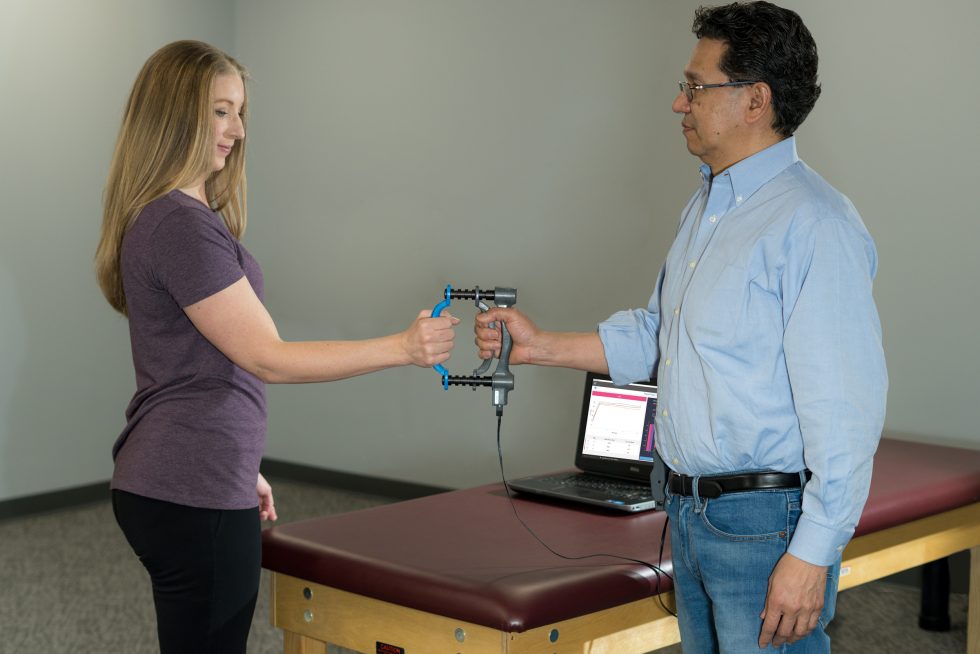
Technology Solutions: Advancing Functional Assessment Capabilities
There is nothing wrong with using basic and rudimentary screening techniques in the clinic. Visual observation of gait and other functional movements is an important skill for rehab professionals to have in their tool belts.
However, in this day and age, clinicians should consider leveraging technology to their advantage. BTE offers a wide variety of tools to help quantify patients’ functional ability.
Computer-Based Functional Testing Tools
BTE offers a range of assessment tools. Clinicians can easily integrate these tools into their practice, propelling their care to a higher level. For instance, the EvalTech allows PTs to conduct FCEs on patients easily while providing high quality data. Furthermore, Prism enables practitioners to conduct specialized evaluations for given scenarios, while the PrimusRS provides an all in one solution for eval and rehab planning.
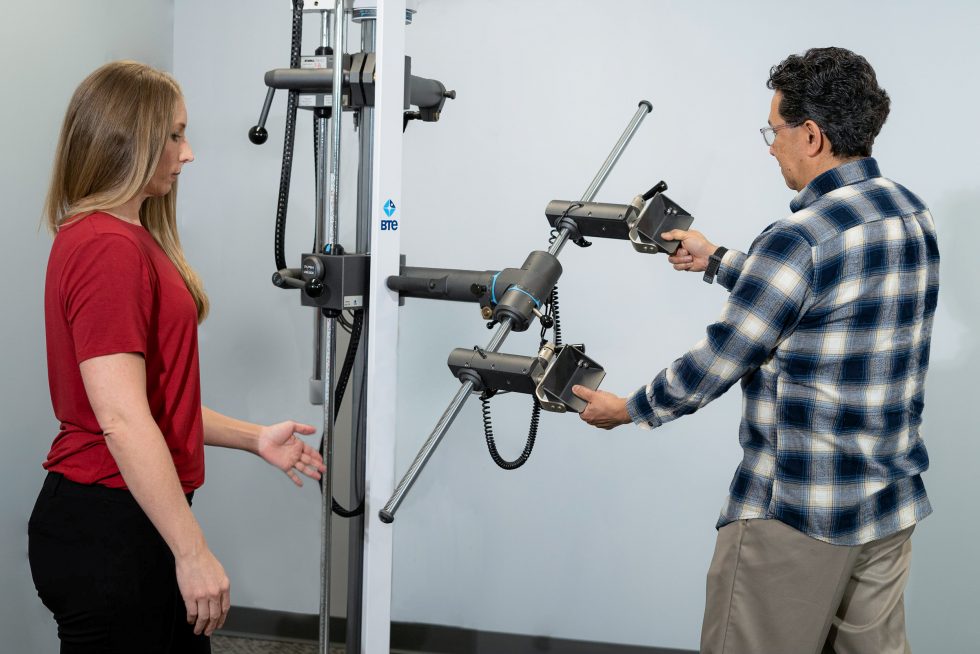
For those looking for an on-the-go functional testing solution, the EVJ is the go-to tool. This can help PTs carry complex testing equipment with them wherever they provide treatment.
Objective Measurement and Data Analytics
When it comes to force and ROM measurement, PTs can easily obtain this data with tools such as the PrimusRS. This tool can help you objectively measure several movements and activities, including upper and lower extremity strength, range of motion, ADLs, and job tasks.
Job task measurement tools, such as the EvalTech, track performance metrics on various activities. Similarly, the EVJ and Evaluator can provide objective rehab data on the go.
BTE also provides a means of integrating data through an EMR. This helps to keep the entire clinical team in the loop while also maintaining all patient records in one place.
Implementation Best Practices: Maximizing Clinical Value
Efficiency and effectiveness are critical in the clinic. If you want to ensure that you have a successful practice, you need to have the right tools for the job.
PTs need to select the best equipment for their practice, integrate screening into patients’ plans of care, and ensure reliable and valid results from the data collected. This is how you maximize clinical value.
Selecting the Right Tools for Your Practice
When obtaining new screening tools for your practice, you need to pick items that will benefit your patient population. A clinic with solely geriatric patients probably does not need to have a professional athlete-grade isokinetic machine. Rather, said clinic may instead benefit from joint friendly cam machines for testing their patients’ strength.
Further, clinicians need to make sure they provide adequate training and continuing ed for staff members in how to use screening equipment. This will ensure better and more reliable data gathering.
Lastly, clinic owners need to be practical when investing in new equipment. Does the clinic have the space for the equipment? Will the benefit outweigh the cost?
Integrating Screening into Patient Care Workflows
From evaluation to discharge, and every step in between, PTs benefit from effective screening tools. When those screening tools can easily integrate into your documentation and EMR system, all the better.
When a patient first walks in the door, initial evaluation protocols should capture their functional ability. You may select a performance-based test, self-report measure, a work-specific test, or all three to assess their abilities.
From there, you need to monitor progress and determine whether your interventions are working. Regularly assessing your patients with screening tools is a great way to accomplish this.
Then, all of your data needs to documented through EMR to keep everything in one place. When you can seamlessly integrate screening into your notes and treatment plan, you create a more cohesive practice.
Flexible screening tools, such as the EVJ from BTE, make quick and regular patient assessments easy. These tools are easy to implement at any time and they provide useful data for treatment and plans of care. This is a solid option for therapists in many settings, but especially mobile therapists or those with limited space available.
Ensuring Reliable and Valid Results
Assessment tools themselves are not foolproof. Any staff who will oversee testing with screening assessment equipment needs to be trained in their proper use. Further, the equipment may require regular calibration and maintenance. Without these protocols in place, the data will not be as helpful as it could be.
Measuring Success: Outcomes and ROI
Clinic managers and owners should always be mindful of how their equipment investments are benefiting their practice. Does purchasing and implementing functional screening protocols improve patient outcomes and increase the clinic’s bottom line?
Having access to this detailed data provided by advanced equipment vastly improves clinical practice. For one thing, it helps clinicians design treatment plans, improving patient satisfaction and outcomes. Also, referral sources are always thrilled to see patients getting better. Plus, they can be better kept in the loop with the objective data obtained from these tools. The same goes for insurance companies. When insurance companies have hard data and can see clear changes in patient status, they are more likely to approve visits and charges.
All of this leads to the end result of a successful clinic owner with positive ROI from purchasing the right equipment for the job. Satisfied patients, insurance companies, and referring physicians all lead to a better bottom line. This is why it’s always important to have clear metrics related to your outcomes so that you can make the modifications necessary to get the best ROI. So, as you can see, outcome tracking in physical therapy is critically important for success.
Building a More Effective PT Practice
If you want to stand out amongst the masses of providers out there, you need to invest in the best tools available for your patients. Proper screening leads to better treatment, better treatment leads to patient retention and satisfaction, and patient retention and satisfaction leads to a more successful clinical practice.
The advanced screening tools and technology offered by BTE can make improving your practice a breeze. With just a few key tweaks to your protocols and equipment, you’ll be well on your way to making your practice shine!
Bennett Richardson, PT, DPT, CSCS is a Physical Therapist and writer. He is the owner of Richardson PT LLC, a mobile, cash-based physical therapy service out of Pittsburgh, PA. Ben is passionate about many health-related topics including weight loss and athletic performance. To get in touch with Ben, visit www.richardsonpt.com


